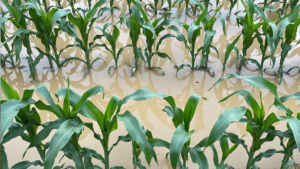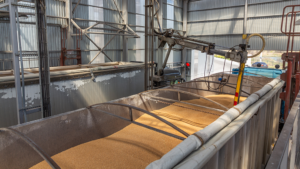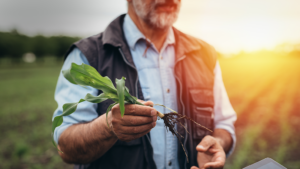Feeding the world
FROM THE CEO'S DESK

IT IS DECEMBER — THE end of another year, another season, and hopefully, another harvest. For Ontario’s farmers, it has been a challenging year — we have experienced wild weather, from early-season drought to record rainfall in the summer months, weed and disease pressure, and the threat of DON (though, thankfully, we have not seen the impact of DON anywhere close to what it was in 2018).
None of this is new or novel for farmers — we know that these disruptions to our businesses are possible, and we plan for and adapt as they arise. And we are always learning from past seasons — the 2018 DON crisis resulted in the industry coming together to find new and innovative ways to deal with its impact, so we are better prepared in a season like 2023 when we see elevated levels of DON at harvest time. The DON working group, a collaboration between the Ontario Ministry of Agriculture, Food and Rural Affairs, the Ontario Agri Business Association, the University of Guelph, and Grain Farmers of Ontario, has developed a number of tools, resources, and information to help farmers, elevators, and industry deal with DON.
But no matter how prepared we are to deal with agronomic issues as they arise, there are all kinds of situations that can arise that we are not prepared for — the Russian invasion of Ukraine and its ultimate impact on fertilizer supply and global food security come to mind. Recently, it was strike action by St. Lawrence Seaway workers at the end of October that caused havoc for Ontario’s grain farmers — a situation that none of us expected but yet caused significant disruption for the entire industry.
Six million tonnes of grain flow through the St. Lawrence Seaway each year on its way to customers around the globe. And much of it leaves ports at harvest time, as farmers and elevators deliver grain as it comes off the field to be loaded onto ships destined for customers in international markets like Europe, Asia, and South America. The Seaway strike could not have come at a worse time for Ontario’s farmers — the strike caused the movement of grain to come to a grinding halt just as the soybean harvest wrapped up. Farmers found themselves with nowhere to deliver their crops as elevators started turning away deliveries, on-farm storage was at capacity, and remaining crops were left standing in the field.
The strike action at the Seaway was unexpected, but we jumped into action quickly to work with industry partners to highlight the impact of the strike on our industry and the need for a quick resolution. Through meetings with industry stakeholders and the government and a robust media relations campaign, we got the word out that the Seaway strike was a major threat to Ontario’s farmers, Canada’s economy, and Canada’s and the world’s food security.
Thankfully, the strike action was settled within a week, and grain started flowing through the Seaway again, averting a full-scale disaster that could have seen Ontario’s crops stuck in the field and harming Canada’s reputation as a reliable supplier of grains to markets around the world. It is a reminder of how important the work that Ontario farmers do each and every day — feeding Ontario, Canada, and the world.
As we approach the New Year, the January District meetings are just around the corner. I hope to see many of you at the meetings where we can share more about what Grain Farmers of Ontario is doing to support farmer-members and the grain industry. We will also elect delegates, alternates, and directors in even-numbered districts. You can find the date, location, and time of your District meeting on page 17.
I also want to wish all of you a Happy Holidays and a joyous New Year — I hope you can take a break after the busy harvest, and may your holiday season be filled with family, friends, and good health. •
























